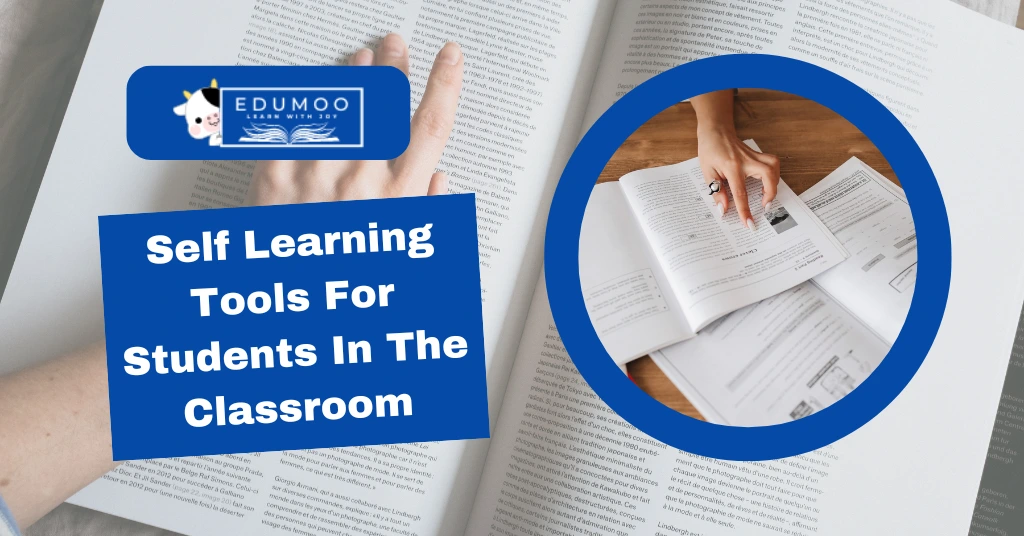In today’s digital age, self-learning tools have become essential for students. These tools empower learners to engage with educational material at their own pace, helping them enhance their skills. This blog will explore various self learning tools for students in the classroom, discuss their benefits, and provide practical examples and strategies for integration into daily learning.
| Also Check: Discover Engaging STEM Learning Kits for Students |
What are Self Learning Tools?
Self-learning tools are resources that enable students to learn independently. They encompass apps, websites, and software that provide a wealth of educational content. These tools allow students to explore subjects beyond their classroom lessons, promoting critical thinking, creativity, and personal growth.
Benefits of Self-Learning Tools
Self-learning tools offer numerous advantages for students, including:
1. Personalized Learning
Students can learn at their own pace, spending more time on challenging topics while moving quickly through areas they grasp easily.
2. Access to a Variety of Resources
These tools provide access to diverse materials, such as videos, articles, quizzes, and interactive simulations.
3. Improved Engagement
Many self-learning tools incorporate gamification, making learning enjoyable and encouraging active participation.
4. Development of Critical Skills
Self-learning fosters essential skills like time management and problem-solving, as students take responsibility for their education.
5. Flexibility
Students can access these tools anytime and anywhere, allowing them to fit learning into their schedules.
Popular Self Learning Tools for Students In The Classroom
Several self-learning tools are particularly popular among students:
1. Khan Academy
Khan Academy is a free online resource offering a wide range of courses across subjects like math, science, and humanities. Students can watch video lessons, take quizzes, and track their progress.
Example: A student struggling with algebra can find videos explaining specific topics and practice exercises until they feel confident.
2. Quizlet
Quizlet helps students create flashcards and quizzes, making studying interactive and enjoyable. It also provides access to study sets created by others.
Example: A student preparing for a history exam can search for existing flashcards or create their own to focus on key facts.
3. Coursera
Coursera offers online courses from top universities. While some courses are free, others require payment, providing students with opportunities aligned with their interests and career goals.
Example: A college student interested in programming can enroll in a course from Stanford University, learning at their own pace and earning a certificate.
4. Edmodo
Edmodo is a social learning platform that connects students and teachers, allowing for resource sharing and collaboration. Teachers can assign tasks and track student progress.
Example: A teacher can create a discussion forum for a literature class, encouraging students to share thoughts and respond to peers.
5. Google Classroom
Google Classroom is a free tool that helps teachers manage assignments and resources. Students can submit work, communicate with teachers, and access learning materials.
Example: A student can view their assignments for the week and submit essays directly through Google Classroom.
Integrating Self-Learning Tools in the Classroom
To enhance the learning experience, consider these strategies for integrating self-learning tools:
1. Set Clear Goals
Establish clear objectives for using self-learning tools to help students understand their purpose and how to maximize their benefits.
2. Provide Guidance
Guide students in selecting the right tools for their needs, offering tutorials or resources to help them get started.
3. Encourage Collaboration
Promote collaboration among students using self-learning tools, enabling them to discuss findings and support one another.
4. Regularly Assess Progress
Implement regular assessments to track student progress, using quizzes or reflections to evaluate tool usage effectively.
5. Foster a Growth Mindset
Encourage students to embrace challenges and learn from mistakes, helping them appreciate the value of self-learning tools.
Examples of Self-Learning Tools in Action
Example 1: Flipped Classroom Model
In a flipped classroom, students watch lecture videos at home and complete assignments in class. Teachers can use tools like Khan Academy or YouTube for instructional content, focusing class time on discussions and hands-on activities.
Example 2: Personalized Study Plans
Teachers can create personalized study plans with platforms like Edmodo, ensuring that each student receives tailored support based on their strengths and weaknesses.
Example 3: Peer Learning
Students can use Quizlet to create study sets for one another, quizzing each other in pairs or small groups, fostering collaboration.
Example 4: Project-Based Learning
Using Google Classroom, students can manage group projects, collaborate, share resources, and submit their work in one place, encouraging teamwork.
Example 5: Gamified Learning
Platforms like Kahoot allow teachers to create quizzes that turn learning into a game, making the educational process more engaging and competitive.
| Tool | Key Features | Best For |
| Khan Academy | Video lessons, practice exercises | Mastering concepts |
| Quizlet | Flashcards, quizzes, study sets | Quick memorization |
| Coursera | Courses from universities, certificates | Professional development |
| Edmodo | Collaboration, assignments, discussions | Social learning |
| Google Classroom | Assignment management, communication | Organized classroom management |
Conclusion
Self learning tools for students in the classroom are invaluable resources, promoting personalized learning, engagement, and skill development. By effectively integrating these tools, teachers can enhance the learning experience for all students. With clear goals, guidance, and collaborative efforts, students can thrive in their educational journeys. Embracing self-learning tools is essential in today’s digital age, empowering students to take charge of their education and prepare for future success.

